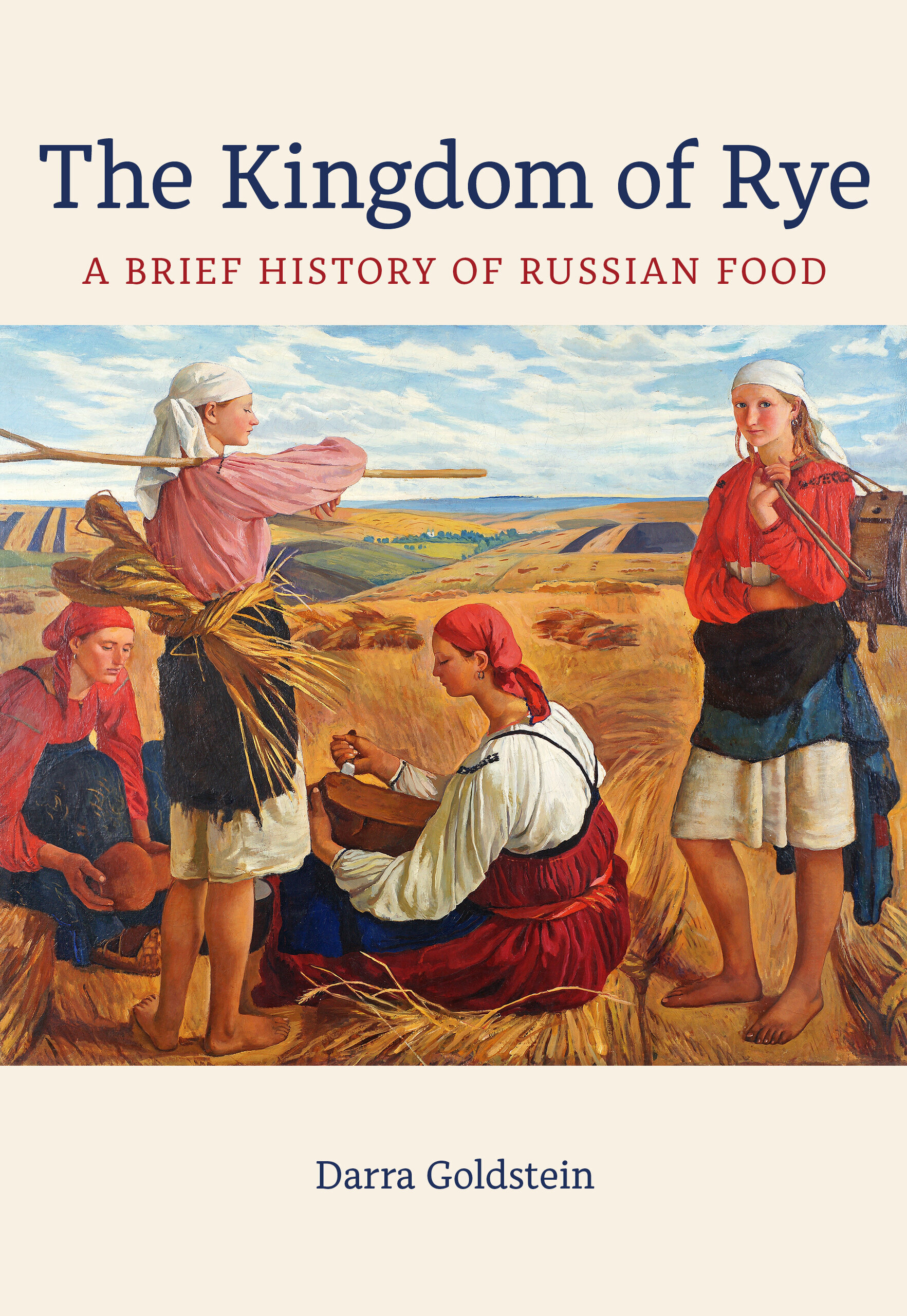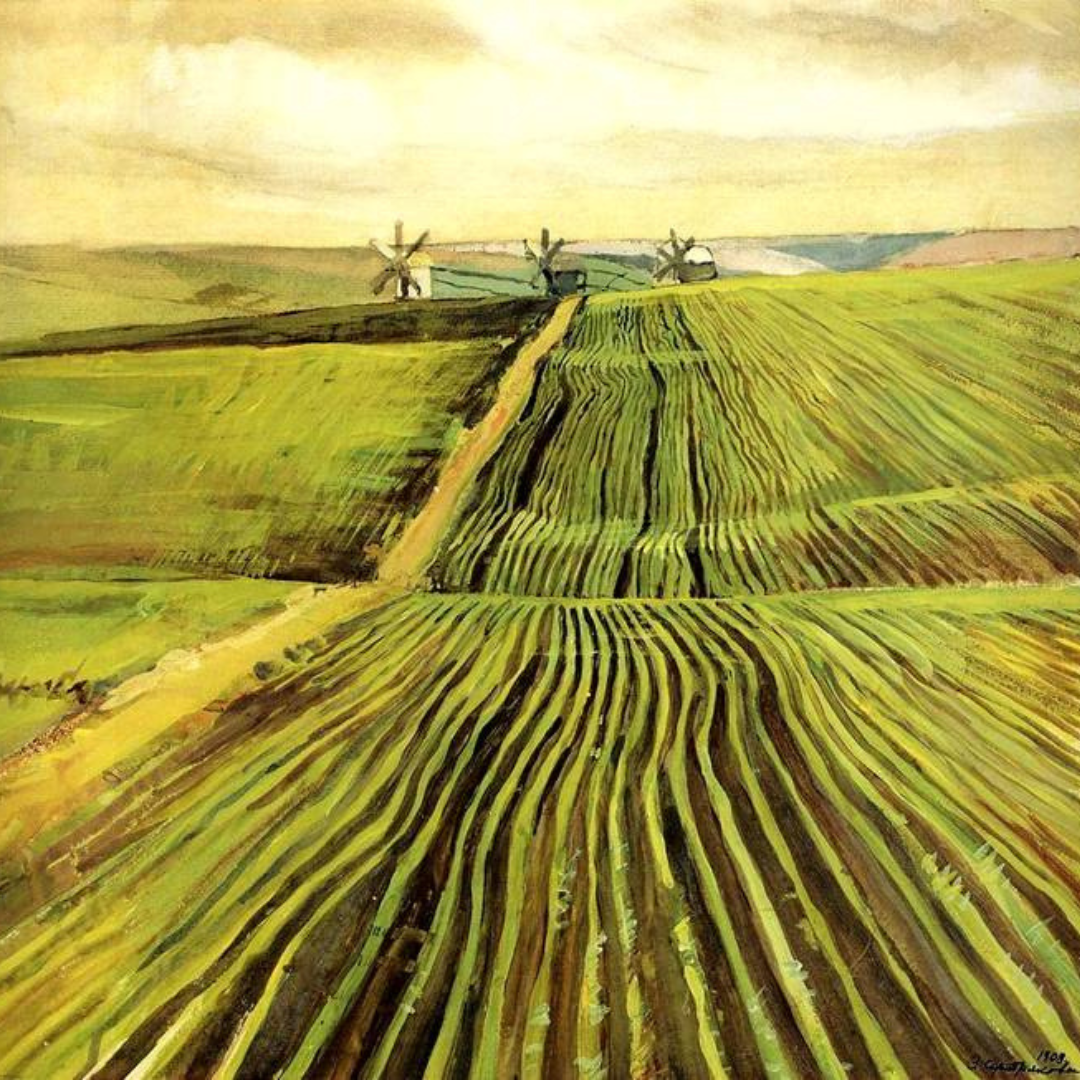A history of Russian food

Published by: University of California Press

Prior to reading Darra Goldstein’s Kingdom of Rye: A Brief History of Russian Food, my knowledge on the subject was scant. The political dynamic of the Cold War and the geographic reality of the Iron Curtain made Russian food largely inaccessible during my childhood in rural America. What passed for Russian foods consisted of beef stroganoff à la Betty Crocker, caviar at an aunt’s Christmas party, and vodka in my college years. Russian food and its history were simply unfamiliar and slightly forbidden. Even during the thaw of the 1980s, Russian recipes had neither the panache of other ethnic cuisines nor the multitude of Russian or Soviet émigrés to make them a standard part of American foodways in the United States. Without the food or the culinary desire to produce or consume it, the history of this topic went largely unnoticed by the American multitude, epicurean and abstinent alike.
My first understanding of Russian food in print came through the writing of Anya von Bremzen in 2014.1 Her longing for her homeland’s foods confirmed that the decadent flavors of the nobility and bourgeoisie under the Romanovs was replaced by a Soviet system that produced a uniformity and simplicity meted out to the masses. Toward its end, ration lines and empty shelves became a common sight on Western television screens.2 Decades later, those remembrances were forever enshrined within Kolejka, a Polish board game about the reality of food scarcity and consumer goods under communism.3
What passed for Russian foods consisted of beef stroganoff à la Betty Crocker, caviar at an aunt’s Christmas party, and vodka in my college years.
Despite my remembered historical realities, Goldstein gives a refreshing alternative and long view of Russian cuisine with communal canteens and ration lines occupying only part of Russia’s long culinary history. Arranged in a loose chronological format around three areas and a coda on post-Soviet Russia, Goldstein provides thematic vignettes on ingredients and cooking processes, but also cultural and conceptual notions of hospitality, dining out, and health foods in Russia. One noteworthy practice that encourages the reader to inquire beyond the text is Goldstein’s inclusion of transliterated Russian words within her vignettes. Neither pedantic nor overwrought, these scholarly gems are sometimes as simple as parenthetic additions or fascinating linguistic digressions. Regardless, they make the text invaluable as a culinary reference.
Kingdom of Rye: A Brief History of Russian Food is a pleasant read, concise and conversational in tone, yet erudite in its content. It is no small feat to strike the right balance between these forces, but the result is a book that those who love food and the history of food will relish. The text is well-researched and interesting and persuades the reader to realize a new perspective on Russian food history. One notion that I had not considered was the value of fermentation and culturing of foods that is synonymous with both historical and contemporary Russian food. Dominated by a geography of large tracts of wilderness and severe weather, the conditions to grow fresh produce year-round were impeded by short growing seasons and limited technological advancements for much of Russian history. Conserving food is essential to Russian survival that has not had a parallel in the United States since the Great Depression. To discover that nearly every bread, vegetable, drink, and dairy product has a fermentable form in Russian culinary practice reveals a hidden foodway apart from the Soviet ration line. The popularity of fermented foods in the United States for health reasons coupled with contemporary inflation compelling Americans to find ways to offset large grocery expenditures means Russian food and fermentation practices may eventually find a niche in western palettes.4
One noteworthy practice that encourages the reader to inquire beyond the text is Goldstein’s inclusion of transliterated Russian words within her vignettes. […] these scholarly gems are sometimes as simple as parenthetic additions or fascinating linguistic digressions.
Goldstein mentions the diversification of food during Russia’s imperial expansion throughout the Caucasus and Asia. Georgian, Azerbaijani, and Crimean foods became part of Russian cuisine and dining experiences. Yet as an historical study, I hoped that some less notable foodways might have been addressed, particularly the foods of German and Dutch Mennonite communities in Russia up until the twentieth century. Similarly, the food of the Russian Diaspora communities throughout the world could have been briefly engaged, particularly the communities of Old Believers throughout the Americas.
These are small concerns, and Kingdom of Rye should not be overlooked as the invaluable study that it is because of them. Goldstein has taken a lifetime of knowledge and reflection about Russian food history and condensed it into a form suitable for scholarly gastronomes and amateur foodies alike.
Jason A. Reuscher is an associate librarian with the Pennsylvania State University Libraries. He holds an MLIS and an MA in History, and his research involves the transcription and translation of culinary manuscripts from Kurrentschrift to modern German and English. His ongoing efforts can be found here: sites.psu.edu/dieseskochbuechs1768/ and sites.psu.edu/klosterrezepte/.
1 Bremzen, Anya von. Mastering the Art of Soviet Cooking: A Memoir of Food and Longing. New York: Crown Publishing Group, 2013.
2 Ted Perry, “Russia Food Lines,” filmed January 1992, WDEF News 12 video, 4:29. https://youtu.be/qcyqZKqaxUg?si=cMeV8HvdSf7NIKwe.
3 Madaj, Karol. Kolejka. Warsaw: Institute of National Remembrance – Commission for the Prosecution of Crimes against the Polish Nation, 2011.
4 El Sheikha, Aly Farag. ‘Why Fermented Foods Are the Promising Food Trends in the Future?’ Current Research in Nutrition and Food Science Journal 10, no. 3 (20 December 2022): 827–29. https://doi.org/10.12944/CRNFSJ.10.3.1.
